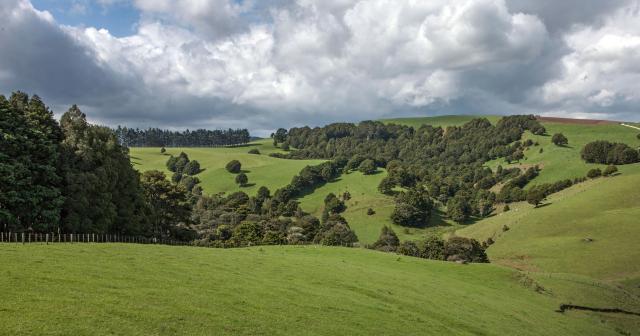Last week we emailed farmers with updates on our environmental advocacy, including on the issue of whole-farm forestry conversions being entered into the ETS. Find out more about this issue and what B+LNZ is advocating for.

Background
In December last year the Government announced details of how it would meet its election promise to limit carbon forestry, in response to ongoing concerns about the amount of whole-farm sales for this purpose.
The details were:
- restrictions on whole-farm forestry conversions being entered into the ETS
- a three-year moratorium on land classes 1-5 being entered into the ETS
- a limit of 15,000ha on land class 6, with no limits on land classes 7 and 8.
At the time it said the new rules would apply from 4 December 2024, unless there was a clear intent for conversion before that date.
What has happened since
Since the announcement, farmers have contacted us as they have seen whole sheep and beef farm sales to forestry entities continue at significant pace, including in Hawke’s Bay and especially in some areas in Southland.
They have noted the land was bought after the announcement was made in December.
They have therefore very reasonably asked whether or not these areas of land should be able to enter the NZ ETS given the land was bought after the Government’s announcement of limits in December.
B+LNZ shares their concerns. We have raised them with Minister McClay and National’s rural MPs caucus in the last couple of weeks and stressed the need to enforce the ‘intent’ properly.
In our view ‘intent’ means having been in the process of purchasing the farm before 4 December 2024.
This week, the Ministry for Primary Industries released guidance on what they will consider a potential ETS participant’s ‘intent’ to plant an area in trees to then enter into the NZ ETS. Access MPI’s guidance here.
The legislation will come into force in October this year. More information on the Government’s changes can be found here.
What B+LNZ thinks about MPI’s new guidance
Most of the things MPI has indicated are evidence of ‘intent’ make a lot of sense, with the exception of receipts for ordering seedlings.
The policy is about limiting the type of land that can be entered into the ETS and since seedlings can be planted anywhere, having seedlings is not proof of intent to place them on a specific area of land. In fact, it’s common for carbon forestry operators to buy seedlings and decide where to put them later.
We have raised our concerns about this with MPI and will be seeking removal of this as proof of intent.
Our wider view
Landowners have a right to do what they wish on their land, but there is a problem in long-standing policy settings that encourage offset planting instead of carbon emissions reduction, and at the expense of food production. These policy settings have created a massive distortion in the land and carbon market.
We strongly support the integration of trees within farms – including for carbon forestry – while our concern is with the scale and pace of whole-farm conversions into forestry driven by expected returns from carbon credits.
What next
We will continue to monitor the rate and pace of afforestation happening across the country.
We will continue to put pressure on the Government to ensure it follows through on its promises to address this issue and enforce limits on the use of carbon forestry.
We’ll keep farmers informed on this important issue.
Further information
- April 2025 letter to Ministers about seedling ‘intent’ (PDF, 121 KB)